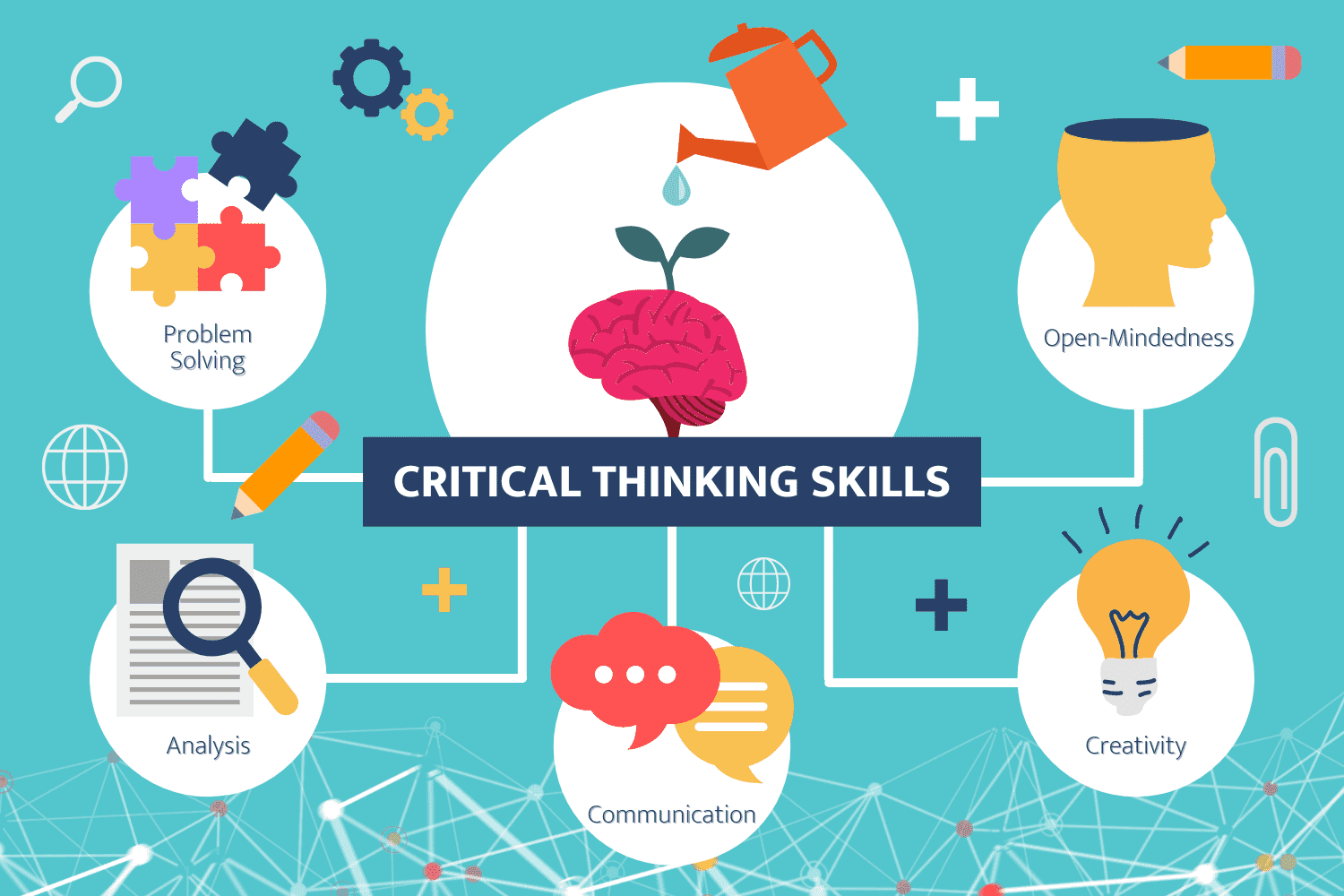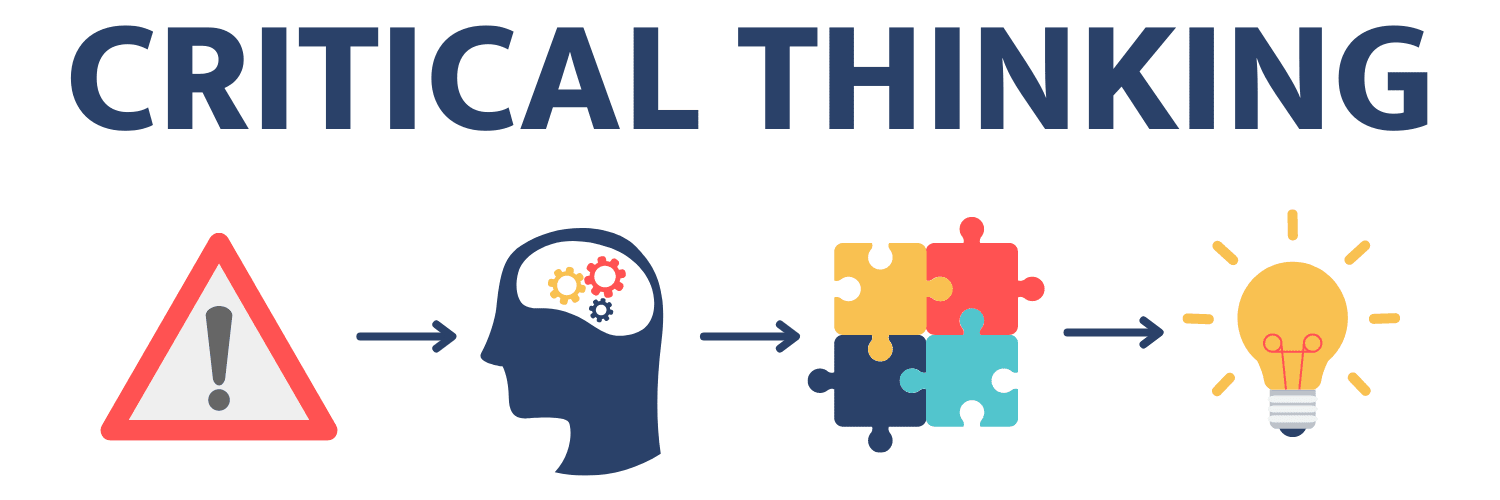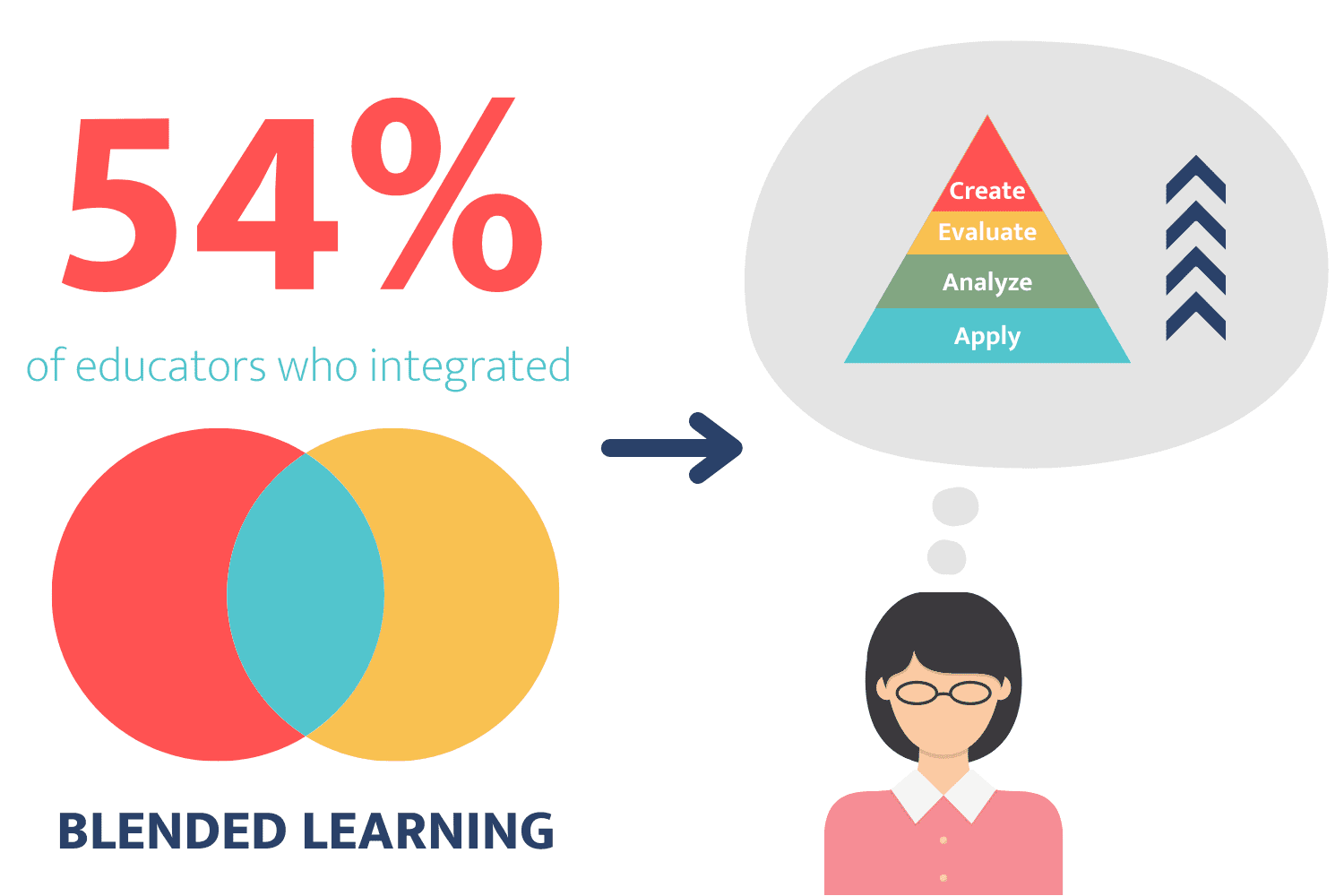Teaching Critical Thinking Skills (and How Technology Can Help)
Written by: Abigail Zhang and Casey Nguyen
It is a major struggle to teach and evaluate critical thinking skills in a large introductory business course because professors lack the bandwidth to provide detailed feedback to subjective assignments. Students could easily be rewording answers they found online or wrapping guest work in a sophisticated language -- and it is impossible to tell the difference.
There is no doubt that writing and case exercises help learners develop critical thinking, but effectiveness declines from the assessment phase onward.
The inability to assess subjective assignments in a scalable and objective manner remains a major challenge for undergraduate introductory business professors as they often lack the time and resources to effectively coach students on how to think about information.
With ever-increasing student enrollment and the need to cover a significant amount of concepts on diverging but interdependent business functions, core business courses are often the most susceptible to the challenges of time restriction. Professors usually have no choice but to resort to quick and easy instructional methods such as lecturing and objective tests that may not be as constructive for modeling, training, and evaluating higher order thinking skills.
As a result, it is difficult for professors to help freshman business students develop critical thinking in the classroom. To make it worse, as students could get accustomed to being passive learners as they go forward in their academic career.
What is Critical Thinking and Why is it Important?
According to an article published in the International Journal of Advanced Research in Education Technology, critical thinking is a “process that requires purposeful and reflective judgement, leading to improved logical conclusions to arguments or solutions to possible problems.” Simply put, it is the act of thinking about your thinking -- metacognition.
Critical thinking skills are important for learning because it allows students to not only understand information, but also to use that information objectively in order to make more informed decisions. Tempelaar found in a 2006 study that there is a positive correlation between critical thinking abilities and performance in business courses.
More importantly, these skills are highly desired in the workplace because they are hard to automate. Out of 63,924 hiring managers surveyed in 2016, 60% of them identified critical thinking/problem solving as the number one soft skill they look for but see lacking in recent college graduates. Therefore, training undergraduate business students for critical thinking skills early on can better prepare them for their future.
Read more: The Importance of Building Critical Thinking Skills
Effective ways to teach critical thinking skills to undergraduate business students
As important as critical thinking is for modern business activities, it is a mental habit that freshman and sophomore students are not accustomed to. Training it effectively in Introduction to Business does not require professors to abandon valuable instruction methods they have used for years or spend extra time at the office. It mainly involves integrating new tools and practices into the syllabus that can amplify the course’s impact and even decrease instructors’ workload.
Instilling critical thinking skills into undergraduate students entails three phases:
Raise awareness to critical thinking
By informing students on the intention to foster critical thinking in the course (in other words, adopting “the infusion approach”), students will be self-motivated to embrace these soft skills as their own learning objectives.
Discussing the importance of thinking critically - in the classroom and in the business workplace - while demonstrating concrete examples of its application and values for career growth can appeal to students’ desires to succeed in their professions. This would inspire them to not only work to understand this mindset, but to also continue practicing it as life-long learners in all areas of life.Model the critical thinking framework
Open discussions are great for actively engaging students in learning how to transfer thinking frameworks modeled in lectures and homework readings. There are two important variables to incorporate in order to facilitate constructive discussions: (1) ask the right questions and (2) give students time to think about their answers.Discussion questions should challenge students to evaluate the clarity, accuracy, depth and breadth of their thinking. In the book Asking the Right Questions: A Guide to Critical Thinking, Browne and Keeley provide ideas for critical thinking questions in their studies, which includes:
What do you think about this?
Why do you think that?
What is your knowledge based upon?
What does it imply and presuppose?
What explains it, connects to it, leads from it?
How are you viewing it?
Should it be viewed differently?
Additionally, McEwen found in a study that just simply having patience and allowing time for student responses in open discussions fosters their critical thinking. Professors often get into the habit of filling the silence by rephrasing questions or calling on another student to respond. It is important that students receive the time they need to answer a subjective question because memorized materials require less time for learners to recall, but thinking of a subjective response takes more time.
Facilitate students’ critical thinking journey
Young students are accustomed to rote learning approaches, so they will inevitably be uncomfortable with the change in the status quo. Professors can begin to familiarize students with active learning by guiding them towards thinking beyond the answers in a low-risk learning setting.
Problem-based learning or project-based learning activities such as case studies, real-world client projects, idea pitches, or business plan proposals are highly effective for incentivizing students to leverage collaborative learning and/or self-learning to build critical thinking. Challenging young students to present solutions to open-ended issues can encourage them to tap into external resources, revisit learned concepts, and ask essential questions in order to brainstorm and deliver a strong argument.That said, grading subjective writing assignments and tests can be tough given the time constraints, but there are ways to tweak traditional assessment methods capable of being graded at speed and scale, such as multiple-choice exams, to necessitate critical thinking without the extra work. For example, a question could ask students to select an option that best exemplifies the application of a learned concept. To make it more challenging, questions could provide more than one right answer and require students to select all the right examples or just the one that demonstrates the concept most accurately. This approach to standardized multiple-choice assessments requires more reflection and analysis than questions that focus on information recall.
To enhance students’ problem-solving abilities, it is essential to enable students to identify their shortcomings and promote improvements. One way that could be achieved is by encouraging students to provide peer assessments to each other for large group projects or small in-class exercises. Another way is through investing as much time and resources as possible toward providing thoughtful feedback to students’ subjective assignments. The third way is to review quizzes and exams to model the critical thinking process in explaining the correct answers.
Given that time constraint is only one of many pain points of introductory business courses, technology can also be relied on to mitigate those problems while increasing professors’ capability to deliver student-centered learning experiences.
How technology could help with building and grading critical thinking
The Teaching and Learning Center at the University of Calgary has found that blended learning, or, hybrid learning, is very powerful in teaching critical thinking as it integrates traditional and online learning through simulations, labs, tutorials, and more to enhance engagement with the course content.
The use of technology and virtual learning tools to create a hybrid learning environment increases participation and collaboration among students. Researchers studied the impact of blended learning on students and educators and identified that 54% of educators who integrated blended learning saw an increase in higher level thinking skills among students.
This presents a strong argument for integrating digital learning solutions into everyday classrooms. There are a variety of technology-based learning tools suitable for building critical thinking abilities in core business classes while helping instructors address time constraints and achieving technical learning outcomes. Below are categories of such solutions:
Business simulations are valuable for delivering an interactive, engaging and unique learning exercise that nurtures soft skills and technical knowledge. While being easy to manage, it perfectly fulfills the necessity to integrate problem-based and collaborative learning into the classroom. This article explores more about how to effectively utilize business simulations in introductory business courses.
Online peer and self-assessment tools provide limitless opportunities for business professors to grade and analyze students’ critical thinking outcomes. These tools can automate the majority of tedious work that goes into assigning, overseeing, and distributing feedback. As a result, even professors of large business classes can easily share insights with students at various points during the course to accelerate reflection and growth. Additionally, education entrepreneurs are identifying ways in which machine learning can be utilized in these tools to deliver quantitative insights for analyzing soft skills on the individual level and at scale.
Discussion boards, virtual chat rooms, and instant messages provide asynchronous and synchronous platforms for questioning and critical thinking. These online forums can reduce administrative hassle as they enable AI to help moderate content and students, course support, and faculty can validate responses.
A majority of digital learning tools can easily integrate with business programs’ commonly used LMS. This further alleviates the need to manually input grades, which can be a big cause of time constraints.
Conclusion
As the foundation of business courses generally consist of high student enrollment every academic term, a great deal of content to cover in a short timeframe, and limited support, building and grading critical thinking skills is a constant struggle. Addressing this challenge is critical to better prepare freshmen and sophomores to meet the modern workplace demands early on. Young students enter the class lacking the ability to think or learn independently, so they need guidance through student-centered learning approaches in order to understand and practice making sound judgements and decisions.
Whether an introductory business curriculum decides to continue using tried and true learning techniques or integrate new technology, a variety of solutions are readily available to address the course pain points while enhancing faculty’s capabilities to effectively teach critical thinking.
Having direct experience teaching critical thinking in large introductory business courses, we developed the Intro to Business Game and an automated peer assessment tool in order to simplify the process of running active and collaborative learning exercises.
To learn more about how we leverage technology help professors nurture critical thinking skills at scale, get access our case study.
Also, subscribe to our quarterly newsletter where we provide insights for professors that teach foundational business courses.



